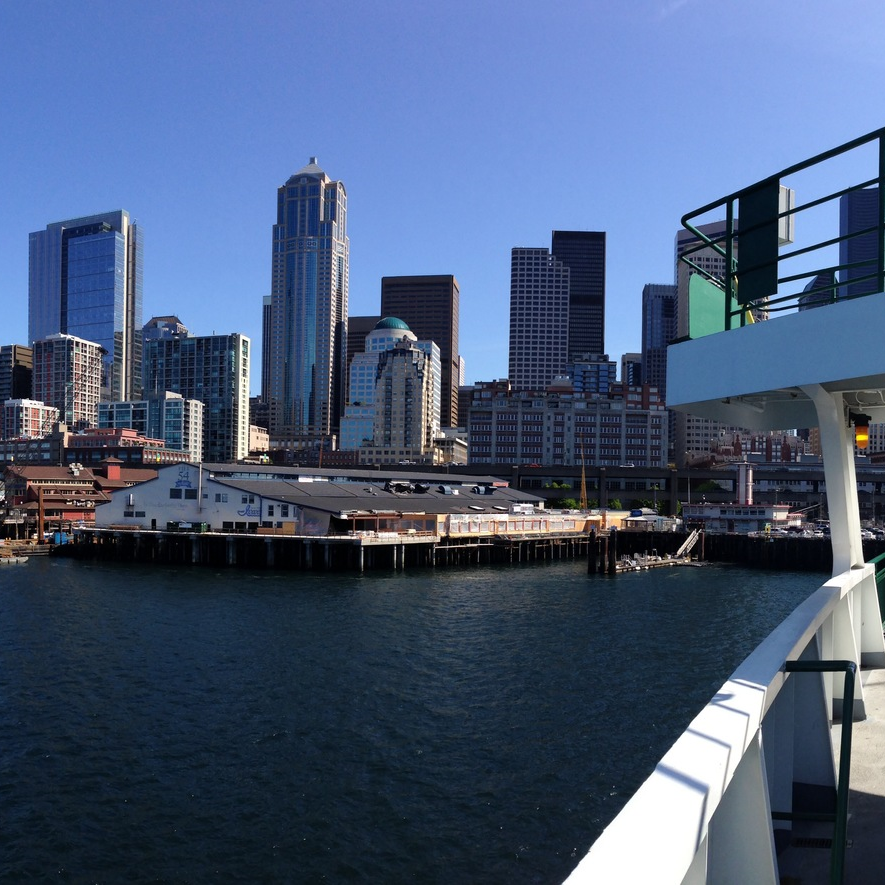Into Thin Air
/At an average of 5,300 feet above sea level—5,352 at the Sunport, as the ABQ airport is adorably named—Albuquerque is officially a mile-high city. That means the atmosphere is pretty thin around here.
After all, it’s common knowledge that the higher you go, the thinner it gets: skiers get light-headed around Boulder (10,000 feet), climbers wear oxygen tanks up Mount Everest (29,000 feet), and airplane cabins are pressurized to keep us conscious (36,000 feet).
But can you explain why? Why isn’t the planet wrapped in a blanket of evenly-dense air from the ground to the edge of space?
The answer lies in the ideal gas law, an equation that demonstrates how the various characteristics of a gas’s state relate to each other. It can be rewritten in different forms to solve for specific variables, but today we’re interested in density, so here’s the one for us:
ρ = pM / RT
ρ = air density (kg/m³)
p = absolute pressure (Pa)
M = the molar mass of dry air (0.0289644 kg/mol)
R = the ideal gas constant (8.31447 J/(mol*K))
T = absolute temperature (K)
From this we can see that the density of air (ρ) is determined by several factors, including
- The amount of pressure it’s under (p)
- Its temperature (T)
- Its composition (M)
To keep things simple, let’s assume that all air’s composition is the same from region to region—perfectly dry (no water vapor) and with the same ratio of gases (typically 78% nitrogen, 21% oxygen, and less than 1% each of argon and other gases).
Now all we need to worry about is temperature and pressure. We find that air density is indirectly related to temperature—the higher the temp, the lower the density, so hotter air expands to spread itself thin. And air density is directly related to pressure—the higher the pressure, the higher the density.
This is the key to understanding why air at higher altitudes is thinner, i.e. less dense. It’s under less pressure!
We tend to think of air as weightless because we’re so accustomed to ignoring its breathy presence. In fact, the atmosphere presses down on the Earth (and on us) with several miles of substance like a second ocean. Its light, frothy surface leaks gas molecules into outer space, but its deepest depth is compressed under a lot of cumulative weight.
And its deepest depth, of course, is sea level. Sea level is to the atmosphere what the Mariana Trench is to the ocean.
Since my old home of Seattle is essentially on the water, let’s use it as an example.
Air density in Seattle
(sea level)
The average air pressure here is about 101325 Pa. Let’s say it’s a brisk 65°F out—291.5 K. We can use the ideal gas law to calculate the air’s density.
ρ = pM / RT
ρ = 101325 Pa * 0.0289644 kg/mol / 8.31447 J/(mol*K) * 291.483 K
ρ = 1.21097 kg/m³
Now let’s calculate the density of air on a similarly brisk day in Albuquerque.
Air density in Albuquerque
(~5,300 feet)
The average air pressure at 5,000 feet is about 84300 Pa. Assuming it’s 65°F out here too (still 291.5 K), we can run the equation as such:
ρ = pM / RT
ρ = 84300 Pa * 0.0289644 kg/mol / 8.31447 J/(mol*K) * 291.483 K
ρ = 1.00750 kg/m³
Drive from Seattle to Albuquerque, and you’re climbing from the atmosphere’s compressed trenches toward its lighter upper layers. And you’ll notice the difference: from 1.21097 kg/m³ at the water’s edge to 1.00750 kg/m³ in New Mexico’s high desert? Your air is about 15% less dense up here!
This explains a quirk I noticed at the grocery store when I made exactly that move a couple months ago. All the yogurt cups and marshmallow bags seem bloated, ready to burp at you the second you break their seal. It looks like they’re packaged at a lower altitude, where the higher air pressure keeps their wrappings loose. Once they’re trucked up here, though, the air trapped inside expands and puffs outward to match the lower density outside.
In my first few weeks here I could commiserate with the weekly grocery shipments—transitioning from sea level to high altitude has all kinds of unintended consequences in your system. Happily, the human body is a wonder of adaptation: tomorrow we’ll talk about how the thin atmosphere up here affects our physiology. Stay tuned! And in the meantime, Stay Puft.
This post was brought to you by data from the National Oceanic and Atmospheric Administration, the manipulated equations of Benoît Paul Émile Clapeyron, at least one Jon Krakauer reference, and a mug of hot cocoa with mini marshmallows.





